 Glen Sannox as seen from Cir Mor Saddle, Isle of Arran, Scotland. Such scenic sweeping grassland is not natural, but in fact the result of human agency.
Glen Sannox as seen from Cir Mor Saddle, Isle of Arran, Scotland. Such scenic sweeping grassland is not natural, but in fact the result of human agency.
“The British Isles, a Roman outpost located at the edge of European civilization, was covered with timber at the beginning of the Middle Ages. All who came to the British Isles unrelentingly pressured the woodlands—through unrestricted grazing by pigs and cattle, unrestrained logging for charcoal (used to smelt iron) and for building timber, and wide-spread clearing and burning of forestland to create pasture. By the end of the Middle Ages, Great Britain had been largely stripped of its native forests, except for patrician hunting preserves.”
—Max Oelschlaeger, “The Idea of Wilderness” (1991)
“Since the Second World War, sheep have reduced what remains of the upland flora to stubble. In 6,000 years, domestic animals (alongside burning and clearing for crops and the cutting of trees for wood, bark and timber) transformed almost all the upland ecosystems of Britain from closed canopy forest to open forest, from open forest to scrub and from scrub to heath and long sward. In just sixty years, the greatly increased flocks in most of the upland areas of Britain completed the transformation: turning heath and prairie into something resembling a bowling green with contours.”
—George Monbiot, “Feral: Rewilding the Land, the Sea, and Human Life” (2014)
I would like to step back to a previous post, Goatfell Peak, Isle of Arran, Scotland, to discuss environmental degradation and how people sometimes misinterpret the land they see before them.
In his book, “Feral,” Monbiot writes about how some people in Britain have forgotten, or never learned, that the land there was once heavily forested and populated by wolves, bears, lynx, wildcats, boar, beavers, loads of birds and other creatures common in woodlands.
With the clearing of the forest so went the wildlife. And nowadays, “the open, treeless hills are widely seen as natural.” But, he writes, “what we have come to accept as natural is in fact the aftermath of an ecological disaster—the wasteland that has replaced a rainforest.”
What’s more, he elaborates on how, incredibly, conservationists have worked to maintain the wasteland as if it was natural and pristine rather than the butchered remnants of a once thriving and diverse forest ecosystem.
 Denuded valleys and hills. Glen Rosa as seen from Goatfell Peak.
Denuded valleys and hills. Glen Rosa as seen from Goatfell Peak.
As I hiked to the summit of Goatfell Peak, along its ridgeline flank toward Cir Mhor Peak, and down into and through the entire length of the Glen Rosa valley, the most remarkable wildlife I saw was a black slug, a caterpillar and a few small trout. It was, despite its seeming beauty, a wasteland with little apparent life apart from its low plant cover.
The land had been stripped of its native forest and mowed into submission by grazing sheep. An exclosure fence had been installed in Glen Rosa to keep the sheep out of an area selected for protection so as to be allowed to regrow native flora.
In all the valley only a few small trees remained clinging to a few rocky, steep nooks on short cliffs above the creek, inaccessible to the ravaging ruminants. Much of the land, as evident in the photos here, resembled the bowling green with contours Monbiot describes.


Monbiot references a phrase coined by Daniel Pauly, “Shifting Baseline Syndrome,” to describe the general public’s lack of historical context when assessing the health of their wildlands.
The idea is that each generation bases its notion of what are normal and natural environmental conditions on the state of the land they have experienced during their own short lifetime.
Without a proper understanding of what the land once was as based on past conditions, and with ever greater environmental degradation through subsequent years, the bar is consistently lowered from one generation to the next. Hence the baseline for what is considered normal, natural and healthy ecosystems is ever shifting, falling lower and lower and lower.
The result is that we can look approvingly, and I mistakenly have, upon an environmental disaster and describe it as being stunningly beautiful, because we lack the historical perspective that dramatically proves otherwise.
 Looking down Glen Rosa.
Looking down Glen Rosa.
“The objective is to teach the student to see the land, to understand what he sees, …”
–Aldo Leopold, “The Role of Wildlife in Liberal Education” (1942)
I encourage readers to take the notion of Shifting Baseline Syndrome into consideration when viewing the wildlands where they live, and to try to understand what they are actually, really seeing before them. To see and analyze what they are looking at through the prism of history and to use that as a baseline in assessing the health of the wilderness in their own wild backyards.
Consider the possibility that what may seem sublime, beautiful and scenic at first glance, may in fact be highly degraded habitat or an outright environmental disaster that has been normalized by a shifting baseline, where the standard of quality, so to speak, creeps ever lower through each subsequent generation but goes unnoticed.
It is important to understand how much has been lost if we ever expect to replenish and revitalize the wild world to anything remotely close to what it once used to be, long before our own birth.
We can’t possibly hope to rebuild what we aren’t even aware once existed.
 Looking up Glen Rosa at Cir Mhor Peak.
Looking up Glen Rosa at Cir Mhor Peak.






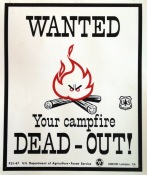

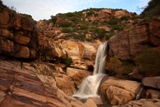
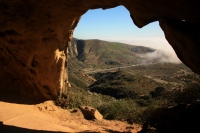

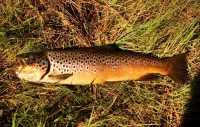
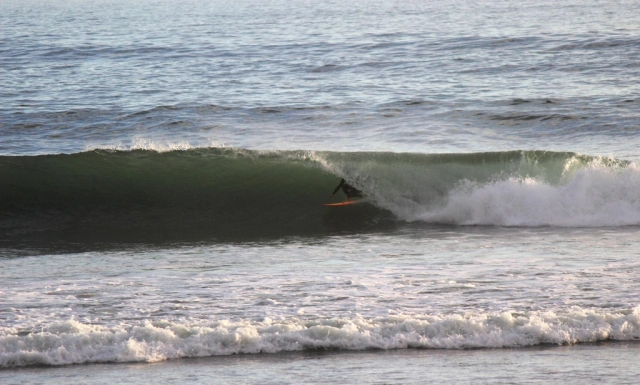
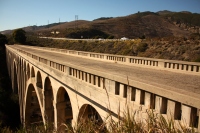
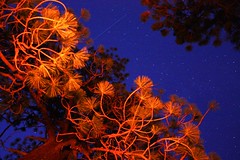








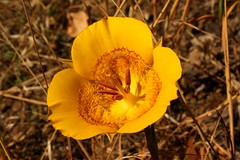









Important and well-thought out post. The truth is that most “wildernesses” aren’t – Yosemite Valley used to have many more meadows and less trees – the native folks burned the forests out, the NPS “preserved” them. So what is “wilderness?”
“So what is “wilderness?”
Amazing you made that comment!
I am working on a lengthy post, the longest ever to be published on this blog, by that very title. It will be a companion piece to this post here.
Therein I will, by way of the words and findings of many experts and scholars, including some of the most famous and widely respected conservationists and environmentalists, explain that in fact the whole notion of wilderness, as defined in the official Congressional act, is a myth.
I’ll wait with bated breath. But it’s always helpful to go back to the beginnings of words – It means, more or less, the uninhabited place of the wild deer. http://www.etymonline.com/index.php?term=wilderness
Indeed. Thanks.
Roderick Nash explains the origins of the word well in his book, “Wilderness and the American Mind.” I have included him in the piece, as well as Dan Flores who writes of the origin of the word in “Caprock Canyonlands.”
Don’t hold your breath, heheh, it will probably be awhile before I make the post. I’ve already been working on it here and there for about eight months.
I briefly mentioned the origin of the word in this previous post:
We have that same conundrum while planning habitat restoration-what is the restore point in time for our project? Usually it is one that never existed, because inevitably the are invasive species and different climates to accommodate
There’s actually really few sheep in Scotland nowadays. There are a lot of deer though. I prefer the landscape as it is now (as I think most British walkers and outdoors folk do) and have no desire to be pursued by packs of wolves or suchlike or fight my way through scrubland (as I know you guys have to do over there) while out walking alone so I hope Mr Monbiot doesn’t get his way!
Carol.
Hey Carol. Thanks for the comment.
Though I know next to nothing about the issue, and certainly have no firsthand experience of the matter, from what I understand from reading Monbiot, government policies fairly well ensure that he won’t get his way.
The system and cultural attitudes that facilitated this process and led to these ends and that maintains the outcome I reference in the post seem to be thoroughly entrenched.
Even if these preferences and policies were suddenly reversed, I would think that it would take a long time for the land to revert to its once natural state if that is even possible.
I don’t think you have anything to be “concerned” about, not that that you’re concerned but you know what I mean.
I remember reading in some historical work a long time ago that a coach journey in the middle ages from Moscow to Paris would be under tree canopy the entire route.
Interesting. I suppose that versions of such notions are told by many people. It brings to mind a remarkably similar line from around here, about traveling the California coast and never leaving the shade of an oak.